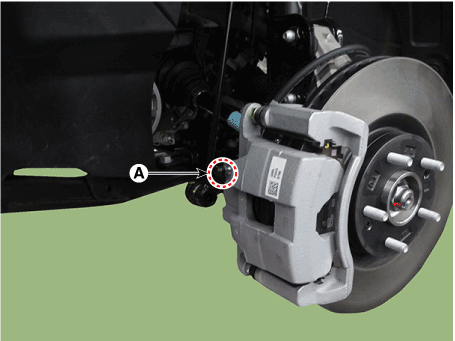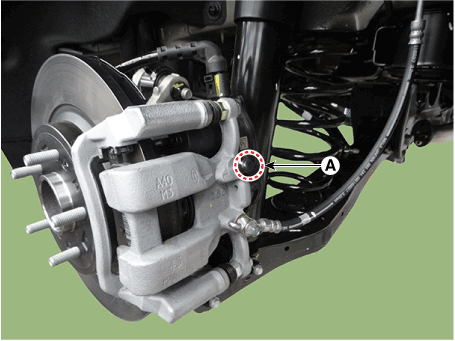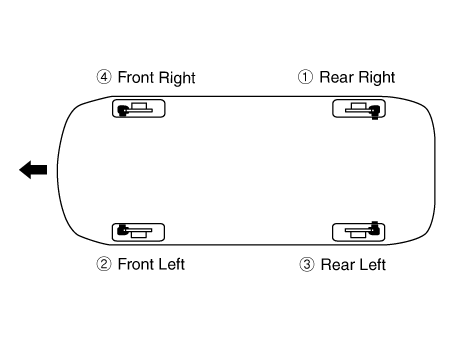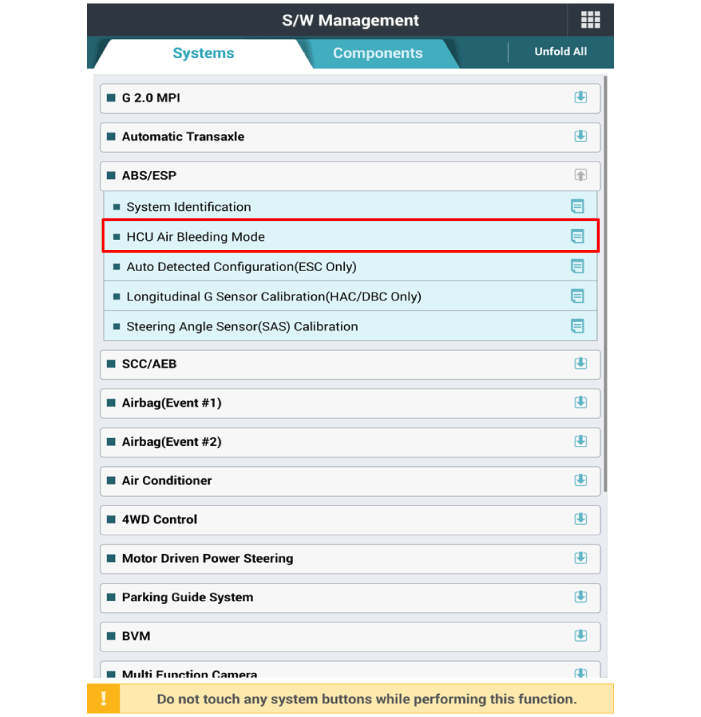 Hyundai Santa Fe (TM): Brake bleeding procedures
Hyundai Santa Fe (TM): Brake bleeding procedures
| Brake System Bleeding |
Nomal Brake System
|
| 1. |
Make sure the brake fluid in the reservoir is at the MAX (upper) level
line.
|
| 2. |
Have someone slowly pump the brake pedal several times, and then apply
pressure.
|
| 3. |
Loosen the right-rear brake bleed screw (A) to allow air to escape from
the system. Then tighten the bleed screw securely.
[Front]
[Rear]
|
| 4. |
Repeat the procedure for wheel in the sequence shown below until air
bubbles no longer appear in the fluid.
|
| 5. |
Follow the sequence as shown below.
|
| 6. |
Refill the master cylinder reservoir to MAX (upper) level line.
|
ESC Bleeding of Brake System
|
This procedure should be followed to ensure adequate bleeding of air and filling
of the ESC unit, brake lines and master cylinder with brake fluid.
| 1. |
Remove the reservoir cap and fill the brake reservoir with brake fluid.
|
| 2. |
Connect a clear plastic tube to the wheel cylinder bleeder plug and
insert the other end of the tube into a half filled clear plastic bottle.
|
| 3. |
Connect the diagnostic tool to the data link connector located underneath
the dash panel.
|
| 4. |
Select and operate according to the instructions on the diagnostic tool
screen.
|
| 5. |
Have someone slowly pump the brake pedal several times, and then apply
pressure.
|
| 6. |
Pump the brake pedal several times, and then loosen the bleeder screw
until fluid starts to run out without bubbles. Then close the bleeder
screw (A).
[Front]
[Rear]
|
| 7. |
Repeat the procedure for wheel in the sequence shown below until air
bubbles no longer appear in the fluid.
|
| 8. |
Refill the master cylinder reservoir to MAX (upper) level line.
|
 Troubleshooting
Troubleshooting
Troubleshooting Problem Symptoms Table Use the table below to help you find the cause of the problem. The numbers indicate the priority of the like cause of the problem. Check each part in order. If necessary, ...
 Brake System
Brake System
Repair procedures Inspection Operation and Leakage Check 1. Brake Booster (A) (1) Check brake operation by applying the brakes during a test drive. If the brakes do not work properly, check the brake booster. ...
See also:
Relay Box (Passenger Compartment). Description and Operation
Description Smart Junction Box(SJB) 1. General function : Interior Junction Box + some functions of BCM It controls loads with CAN communication and IPS. 2. Main function A. Low speed CAN communication(100 ...
Propeller Shaft Assembly
Components and components location Components 1. Front propeller shaft 2. Center bearing bracket 3. Rear propeller shaft Repair procedures Removal • Be careful not to damage the parts located ...
Hood Latch Release Handle. Components and Components Location
Component Location 1. Hood latch release handle ...






